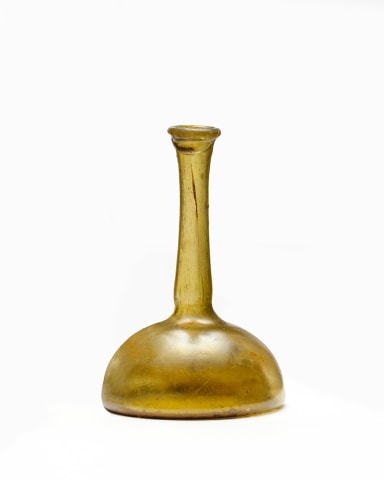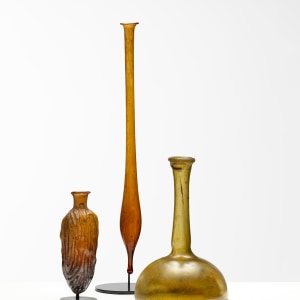Mould-blown in translucent, amber-yellow glass. The hemispherical body has a deeply concave base pushed in close to the external walls, creating an extremely confined internal space, the tall neck is slightly pinched at the base and has a flaring, inward-folded lip, a pontil mark on the underside. Old white rectangular collection label with ‘183’ typed in black was on the body, but now missing. A crack to the lip, otherwise intact.
This very rare form was perhaps a ‘trick’ vessel designed to deceive as to the quantity of the contents.
Provenance
Louis-Gabriel Bellon (1819-1899), St. Nicholas-les-Arras, France; collection no.183Bellon was one of the greatest French collectors of the 19th century. Making his fortune in the textile industry, he began to buy and collect archaeological pieces from the Mediterranean world. Until the end of the 1870s, he accompanied Auguste Ternick in archaeological excavations in the Arras region. It was there that he discovered the Gallo-Roman glassworks which subsequently constituted the most important part of his collection. His collection gained notoriety during the retrospective exhibition of French Art which took place at the Trocadéro in 1896, alongside those of Auguste Dutuit and the Protat printers. Today, part of the collection is kept at the Museum of National Antiquities of Saint-Germain-en-Laye, the Petit Palais in Paris, the Louvre Museum, and the Berck-sur-Mer museum.
Literature
For an example in green glass compare Charles Ede, Roman Glass XIII (London, 1988), no.19



